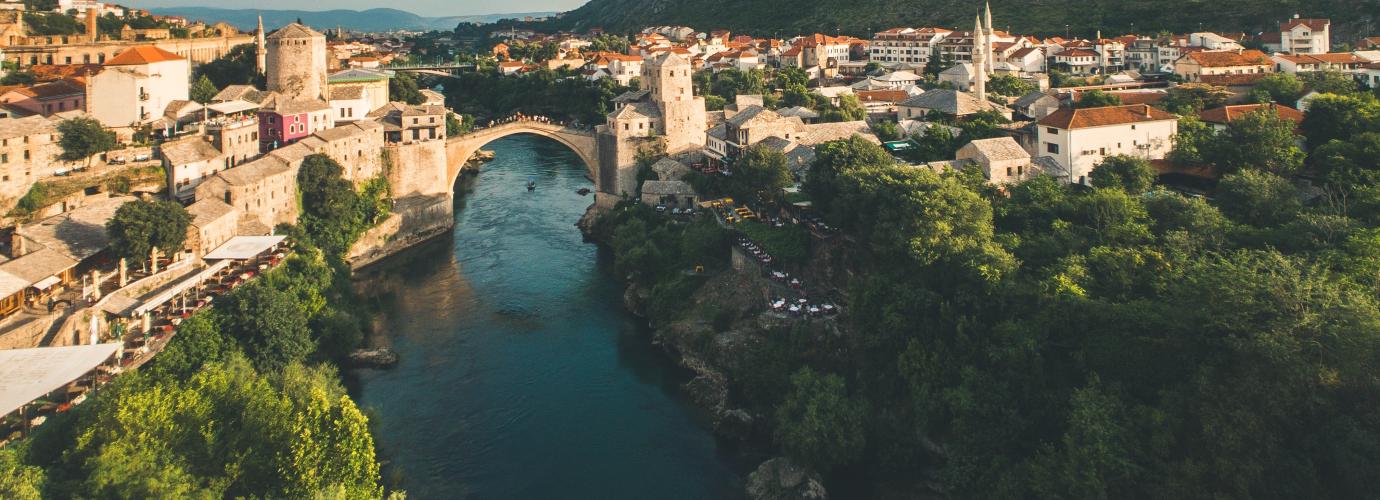Types of institutions
Secondary Vocational Education (ISCED 3) in Bosnia and Herzegovina lasts 3 or 4 years and prepares students for the job market or university.
secondary education laws state that all students who have completed four years of secondary education have access to higher education. Those who have completed secondary education for three years have the opportunity to access the labor market or other forms of further qualification.
Depending on the curriculum, schools may be established and registered as:
c) Vocational technical school,
d) Vocational school,
f) School for pupils with special needs and
g) School for adult education.
h) School can be organized as a center of secondary schools composed of several schools with more directions, occupations and professions.
Geographical accessibility
After primary school, each pupil is allowed to continue secondary education under equal conditions and according to their abilities for acquiring knowledge and skills for work and further education.
Admission requirements and choice of school
Admission of full-time pupils is conducted in June and July term, on the basis of public competition announced by the founder.
Founder invites applications for admission of full-time pupils in the first grade up to 31 May, in the public media.
All pupils from the Bosnia and Herzegovina compete on equal terms for enrollment in the first grade of public or private school, regardless of where they finished primary school.
School enables every pupil to develop their knowledge, skills and abilities in the best way possible.
The parents are entitled to choose the kind of education that their children will acquire in accordance with the possibilities of the child and provided that such a choice exercises the child's right to an appropriate education.
Age levels and grouping of students
A person who has finished primary school and can not be older than 17 years enrolls in the first grade.
Persons who are enrolled in schools for pupils with special educational needs may have different age limit for entry into first grade.
Number of pupils in a class is determined in accordance with pedagogical standards. The optimum number of pupils in a class is 24. A school class may have a minimum of 16 pupils and a maximum of 32 pupils.
A class or educational group of pupils with special educational needs may have up to eight pupils, and in the case of pupils with multiple disabilities, classes may have up to six pupils.
Three pupils with special educational needs may be included in the regular teaching class. If a regular teaching class includes a pupil with special educational needs, such class may not have more than 29 pupils.
If a regular teaching class includes two pupils with special educational needs, such class may not have more than 26 pupils, and with three pupils with special educational needs, the class may not have more than 23 pupils.
Organisation of the school year
The school year runs from September 1 to August 31 of the following calendar year.
Educational work in vocational technical schools and vocational schools is carried out:
a) In I and II grade of three-year education and in I, II and III grade of four-year education in 36 five-day teaching weeks and
b) In III grade of three-year education and IV grade of four-year education in 32 five-day teaching weeks.
Classes and other forms of educational work are realized in two semesters. In the first semester classes begin the first Monday in September.
In the school year pupils have winter holidays lasting for three weeks, spring holidays lasting for one week and summer holidays which last from the end of classes in the second semester to the beginning of classes the following school year.
The Minister issues rules on the school calendar for each school year and publishes it at least 60 days prior to the start of the school year.
School may deviate from the adopted school calendar only for justifiable causes and with the approval of the Ministry.
Organisation of the school day and week
Daily load of pupils is regulated by the timetable and can not exceed 30 hours per week. Classes normally begin at 7:30 am and end up by 7:00 pm.
Another deadline for the beginning and end of classes may be determined. Theory teaching hours, exercises and practical work in school takes 45 minutes. Practical work which is performed in enterprises and other institutions outside the school takes 60 minutes.
A class for pupils with special educational needs takes 40 minutes, if the classes are taught in separate departments. All forms of teaching for pupils are organized in one shift.
The Minister may, under exceptional circumstances, decide to extend or shorten the duration of hours in some or all of the schools.
|
LENGTH OF SCHOOL DAY, EACH DAY OF THE WEEK |
|||
|
FOR FIRST SHIFT FROM I TO IV GRADE |
|||
|
ACTIVITIES BEFORE LESSONS |
LESSONS (STARTING AND FINISHING TIMES IN THE MORNING) |
BREAK |
|
|
Monday |
7.00-8.00 |
8.00-13.55 |
10.35-10.40 |
|
Tuesday |
7.00-8.00 |
8.00-13.55 |
10.35-10.40 |
|
Wednesday |
7.00-8.00 |
8.00-13.55 |
10.35-10.40 |
|
Thursday |
7.00-8.00 |
8.00-13.55 |
10.35-10.40 |
|
Friday |
7.00-8.00 |
8.00-13.55 |
10.35-10.40 |
|
LENGTH OF SCHOOL DAY, EACH DAY OF TE WEEK |
|||
|
FOR SECOND SHIFT FROM I TO IV GRADE |
|||
|
ACTIVITIES BEFORE LESSONS |
LESSONS (STARTING AND FINISHING TIMES IN THE AFTERNOON) |
BREAK |
|
|
Monday |
13.00-14.00 |
14.00-19.00 |
16.25-16.45 |
|
Tuesday |
13.00-14.00 |
14.00-19.00 |
16.25-16.45 |
|
Wednesday |
13.00-14.00 |
14.00-19.00 |
16.25-16.45 |
|
Thursday |
13.00-14.00 |
14.00-19.00 |
16.25-16.45 |
|
Friday |
13.00-14.00 |
14.00-19.00 |
16.25-16.45 |

